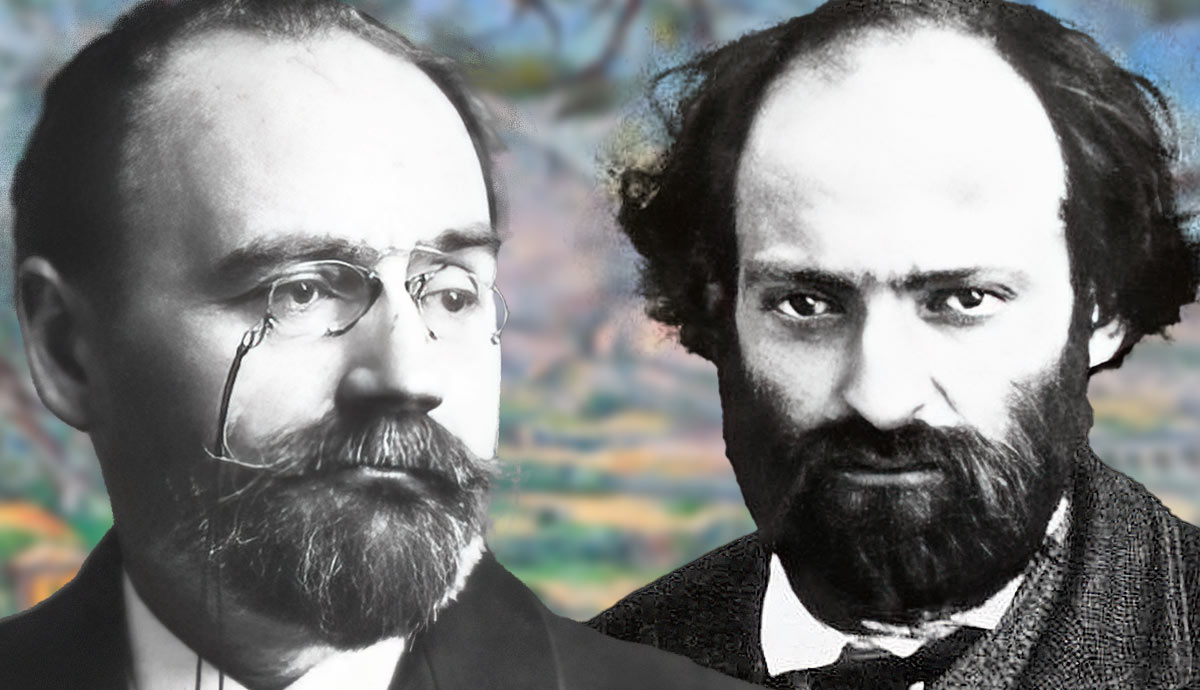
Post Impressionist painter Paul Cezanne and naturalist writer Emile Zola were two of the most significant and influential voices to emerge out of late 19th and early 20th century Europe. Both had an intense boyhood friendship founded on mutual intellectual interests that survived long into adulthood, before being beset by bitter conflict. From humble beginnings in Aix-en-Provence to the bustling city of Paris, we follow the rocky path that their friendship took over the course of their lives, and the striking influence they had on one another’s careers.
Cezanne and Zola Were Childhood Friends

Cezanne and Zola met in early adolescence, when both attended the secondary boarding school College Bourbon in Aix. While Cezanne was big and brutish, the son of wealthy parentage with a quick temper, Zola, a year younger, and raised by a single mother, was frail, sensitive and bookish, making him an easy target for schoolboy bullying. Cezanne took Zola under his wing, and became his protector of sorts, warding off the worst of the bullies. Together, along with Jean Baptiste Baille (who later became an engineer), the trio called themselves ‘the inseparables,’ forging a rock-solid alliance. While other adolescents sat in cafes playing card games, the inseparables bonded over a shared love of nature, long walks and poetry; they would wander for hours in the dry, barren countryside, or bathe naked in the river Arc.
Long Walks and Intimate Letters

Zola set off for Paris with his mother in 1858. While she sought family support for financial stability, Zola spent his final school years feeling desperately lonely at a boarding school in Paris. Yet he and Cezanne continued to write long, rambling letters, sharing their innermost thoughts, fears, and desires with one another and sustaining their close, brotherly bond. When Zola returned to Aix for summer holidays, they resumed their long walks in the open air, revelling in their shared passion for the raw and untamed forces of nature.
They Mixed in Similar Circles in Paris

In many of Zola’s letters he tried to persuade Cezanne to come to Paris. Eventually Cezanne’s father gave him a small allowance, enough to move to Paris and study painting. While Cezanne flitted back and forth between Aix and Paris in the years that followed, struggling to find his place as an artist, Zola’s determination to become a writer was finally paying off. The childhood roles of protector and protected became reversed, as Zola, by now a successful and influential writer, became Cezanne’s mentor, offering him the funds to keep returning to Paris in the hope of finding artistic success. It was through Zola’s support that Cezanne was able to meet the French Impressionist painters Camille Pissarro, Pierre-Auguste Renoir, and Claude Monet, whose approaches to painting would become formative in the development of Cezanne’s career.
Conflict Arose in their Later Years

The intensity of Cezanne and Zola’s friendship cooled as their lives pulled them in different directions. While Zola integrated himself in the left-wing bourgeois circles of Paris, Cezanne was more at home in the rugged countryside of Aix, where he became increasingly religious and socially isolated. But the real death knell to their friendship came when Zola modelled the fictional character of Claude Lantier in his acclaimed novel The Masterpiece (1886) on Cezanne. Like Cezanne, Lantier was a struggling artist whose art was rejected again and again, and he failed to live up to his full potential. In the novel, Lantier’s despair leads him to commit suicide. Such an unflattering portrayal inevitably hit Cezanne hard, and he never spoke to Zola again.
A Lasting Legacy

In a further twist of fate, despite Zola’s success during his day, it was Cezanne who would go on to achieve meteoric success, even if it took him an entire lifetime to earn it. But the marked influence the two figures had on one another is evident throughout both their legacies; Zola as the writer who learned how to observe the world as an artist through the eyes of Cezanne and his band of lively artistic friends, and Cezanne, whose memories of boyhood innocence in Aix would inform some of the greatest masterpieces of his later years.










